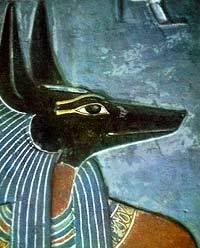09.01.2006
20 Things You Didn't Know About... Death
Newsflash: we're all going to die. But here are 20 things you didn't know
about kicking the bucket.
1 The practice of burying the dead may date back 350,000 years, as evidenced by a 45-foot-deep pit in
Atapuerca, Spain, filled with the fossils of 27 hominids of the species Homo heidelbergensis, a possible ancestor of Neanderthals and modern humans.
2 Never say die: There are at least 200 euphemisms for death, including "to be in Abraham's bosom," "just add maggots," and "sleep with the Tribbles" (a Star Trek favorite).
3 No American has died of old age since 1951.
4 That was the year the government eliminated that classification on death certificates.
5 The trigger of death, in all cases, is lack of oxygen. Its decline may prompt muscle spasms, or the "agonal phase," from the Greek word agon, or contest.
6 Within three days of death, the enzymes that once digested your dinner begin to eat you. Ruptured cells become food for living bacteria in the gut, which release enough noxious gas to bloat the body and force the eyes to bulge outward.
7 So much for recycling: Burials in America deposit 827,060 gallons of embalming fluid—formaldehyde, methanol, and ethanol—into the soil each year. Cremation pumps dioxins, hydrochloric acid, sulfur dioxide, and carbon dioxide into the air.
8 Alternatively . . . A Swedish company, Promessa, will freeze-dry your body in liquid nitrogen, pulverize it with high-frequency vibrations, and seal the resulting powder in a cornstarch
coffin. They claim this "ecological burial" will decompose in 6 to 12 months.
9 Zoroastrians in India leave out the bodies of the dead to be consumed by vultures.
10 The vultures are now dying off after eating cattle carcasses dosed with diclofenac, an anti-inflammatory used to relieve fever in livestock.
11 Queen Victoria insisted on being buried with the bathrobe of her long-dead husband, Prince Albert, and a plaster cast of his hand.
12 If this doesn't work, we're trying in vitro! In Madagascar, families dig up the bones of dead relatives and parade them around the village in a ceremony called famadihana. The remains are then wrapped in a new shroud and reburied. The old shroud is given to a newly married, childless couple to cover the connubial bed.
13 During a railway expansion in Egypt in the 19th century, construction companies unearthed so many mummies that they used them as fuel for locomotives.
14 Well, yeah, there's a slight chance this could backfire: English philosopher Francis Bacon, a founder of the scientific method, died in 1626 of pneumonia after stuffing a chicken with snow to see if cold would preserve it.
15 For organs to form during embryonic development, some cells must commit suicide. Without such programmed cell death, we would all be born with webbed feet, like ducks.
16 Waiting to exhale: In 1907 a Massachusetts doctor conducted an experiment with a specially designed deathbed and reported that the human body lost 21 grams upon dying. This has been widely held as fact ever since. It's not.
17 Buried alive: In 19th-century Europe there was so much anecdotal evidence that living people were mistakenly declared dead that cadavers were laid out in "hospitals for the dead" while attendants awaited signs of putrefaction.
18 Eighty percent of people in the United States die in a hospital.
19 If you can't make it here . . . More people commit suicide in New York City than are murdered.
20 It is estimated that 100 billion people have died since humans began.
(Source: Discover Magazine)










